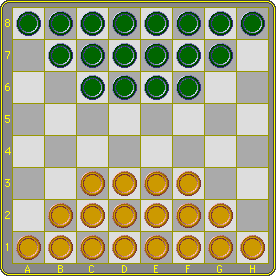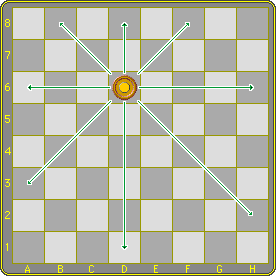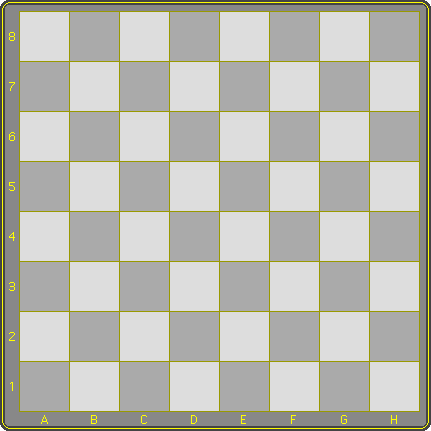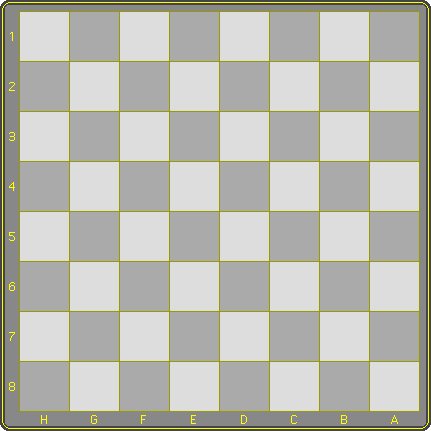The rules mention men and kings. A king is a promoted man. If the difference doesn't matter, they may also mention pieces, for instance 'the number of pieces on the board'.
Linear movement
Linear movement is defined as the move of a straight unbroken line of men of the same color, one square along the line of squares they occupy, provided the square in front is vacant. It includes the move of a single man, which may be considered as a line-of-one. Linear movement does not apply to kings.
Linear movement also fuels Bushka.
 | The diagram shows the initial position. The reason for this choice is a natural tendency of draughts games that allow straight forward movement (Turkish, Armenian, Hexdame), to build up forces along the sides. This initial position creates a certain balance between the center and the sides and demands an economical use of material. Object The object is to leave your opponent without a valid move, either by capturing all his pieces, or by blocking them completely. Draws may occur by mutual exhaustion of material. |
Movement
Men, whether single or linear, move forward only. A king moves queenwise, as indicated.
In Dameo one can open with any man. On the left are 26 unique opening moves white has at his disposal. For each of these there's a symmetric one. Black, on his first move, doesn't face a symmetric situation, so he actually has a choice of 52 answers. Thus after two moves, 1352 different positions are possible.
If a man moves onto the opponent's back row, it is promoted to king. If a linear move reaches the back row, only the head man is promoted.
 |  |
Capture
Capture takes precedence over a non-capturing move. Only if the player to move has no capture to make, may he move a single man, or a line of men, or a king.
- Although pieces may move diagonally, all captures are straight only. Men may capture forwards, backwards and sideways by the short leap.
Kings may move queenwise, but they capture only rookwise, by the long leap. - Capturing, whether by men or kings, is compulsory.
If a piece makes a capture and is now in a position to make another one, it must do so. Thus multiple captures may be made in the same turn. When a multiple capture is being made, the captured pieces are only removed at the end of the turn, and it is not allowed to jump over the same piece twice in that turn, although vacant squares may be passed over more than once. - Majority capture takes precedence: if a player has a choice of captures, he must choose the one that results in the largest number of pieces being captured (kings and men counting equally). When a king has more than one option in terms of captures and destination squares, it must choose its route so that it maximizes the capturing sequence. If there is more than one way to do this, it is free to choose.
- If a man ends its move on the opponent's back row, it is promoted to king. A man passing the back row in a capture, but not ending on it, does not promote.
Coup Turc
| Since a capturing sequence must be completed before the pieces are taken off the board, and since a man may not be jumped twice, Dameo allows for the 'Coup Turc'. Here's a bare bones example: White moves 1.c1e3 (ac5x), 2.e1c3 and the black king must capture four men, ending on d3 where he is stopped by the already captured man on c3, while d2 is still covered by the already captured man on d1. | ||||||






